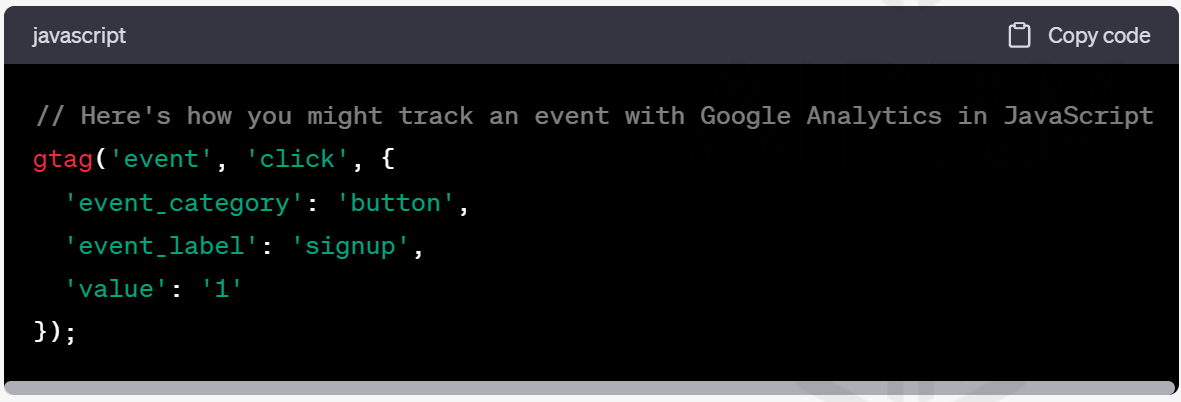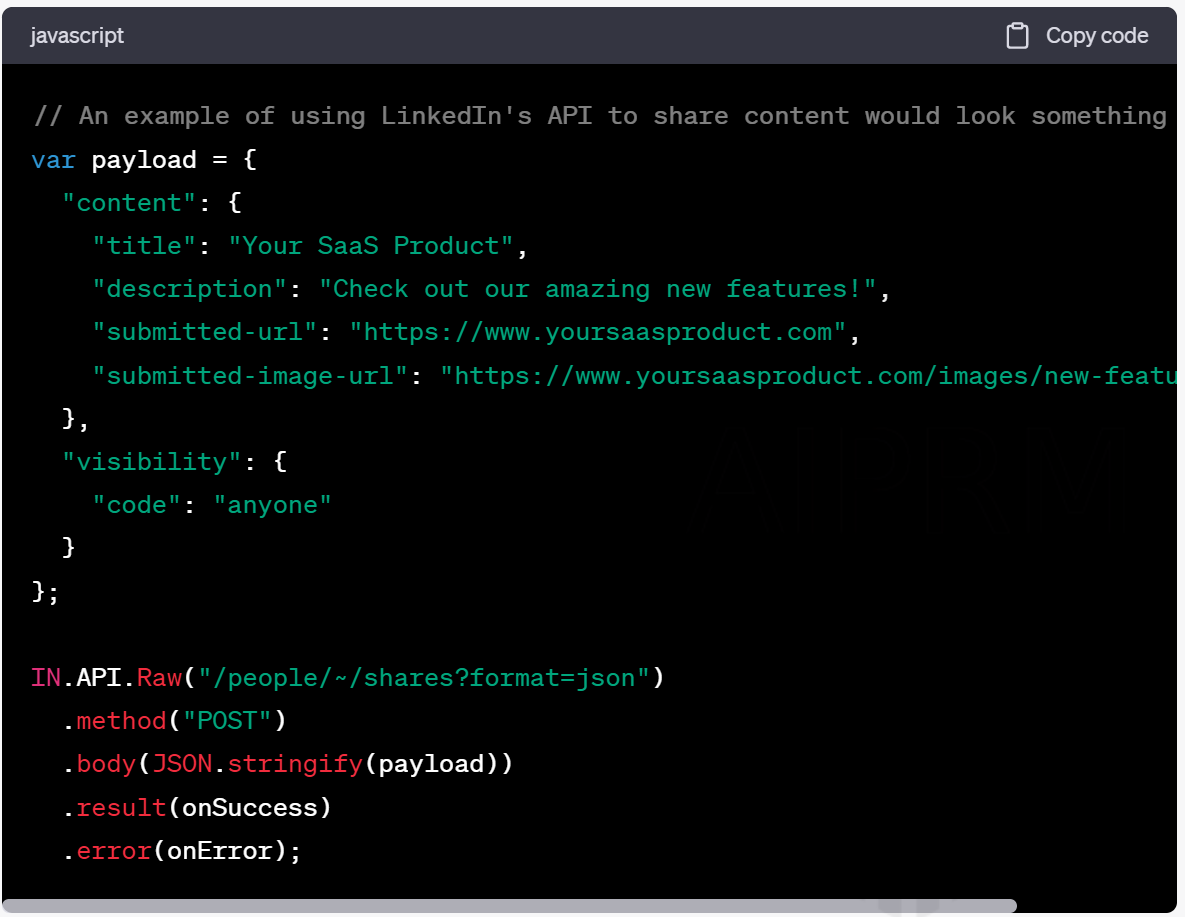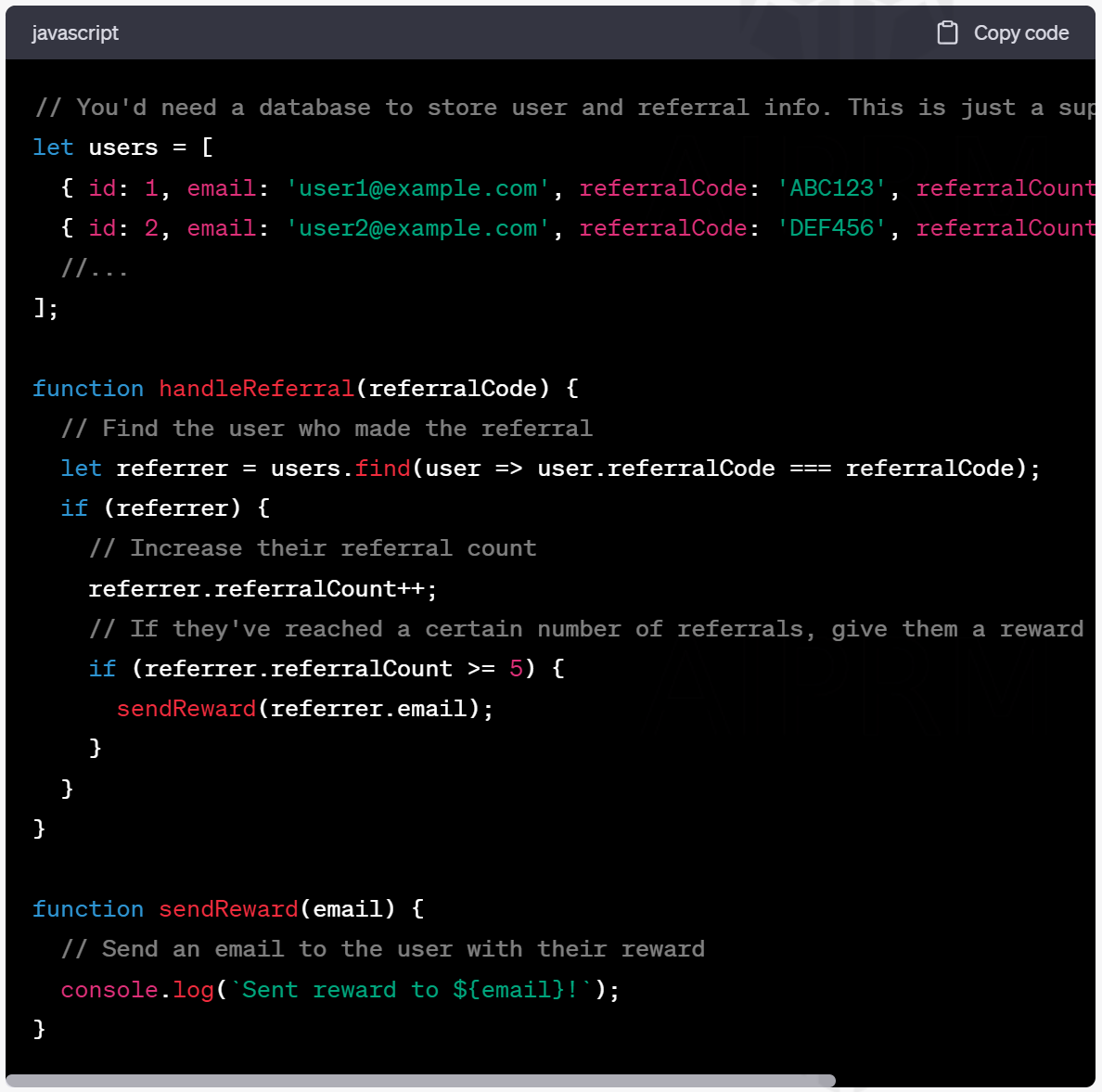16 min to read
Are you struggling to get your SaaS marketing strategy off the ground? With so many tactics, it can be overwhelming to determine which ones are worth investing in. But fear not! In this post, we've rounded up some of the top latest simple tactics for winning SaaS marketing strategy. Follow these tips and tricks to boost your brand's recognition and drive more conversions. So sit back, relax, and let's dive into the world of SaaS marketing together!
Digital agency experts in SAAS companies?
Welcome to CodeDesign.org, your trusted partner for skyrocketing your SaaS business in the digital landscape! We're a dynamic digital marketing agency, laser-focused on crafting innovative, results-driven strategies for SaaS clients just like you. In SaaS's fast-paced, ever-evolving world, we understand that standing out from the crowd and constantly engaging customers is paramount. That's why we've dedicated ourselves to mastering the art and science of SaaS digital marketing - to help you attract, engage, and retain customers while achieving impressive growth.
What is SaaS Marketing?
The term “SaaS marketing” can mean a lot of different things. For some companies, it’s simply a way to refer to the process of marketing their software-as-a-service product. For others, it’s a specific type of marketing that emphasizes the unique aspects of SaaS products and their delivery model.
Regardless of how you define it, successful SaaS marketing requires a deep understanding of your target market and what they want or need from a software solution. It also necessitates an effective lead generation strategy that can capture interested prospects and turn them into paying customers.
An operations team must also be in place to ensure that all customer communications are seamless and that any technical issues can be quickly resolved. For example, a revenue operations team structure may be needed to coordinate between the marketing, sales, and customer success teams. Effective SaaS marketing requires a strategic approach combining elements from multiple disciplines.
Setting Goals for Your SaaS Marketing Strategy
No matter what business you’re in, setting goals is critical to any successful marketing strategy. But when it comes to SaaS marketing, the goals you set need to be specific, measurable, achievable, relevant, and time-bound (SMART).
Here are a few examples of SMART goals you could set for your SaaS marketing strategy:
- Increase brand awareness by X% within the next 6 months.
- Generate X leads per month through our website.
- Convert X% of leads into paying customers within the next 3 months.
- Achieve X% customer retention rate within the next 12 months.
- Grow revenue by X% within the next year.
Leveraging Digital Channels for Your SaaS Marketing Strategy
Digital marketing is one of the most effective ways to market your SaaS product. There are a number of digital channels that you can leverage to reach your target audience and promote your product.
Some of the most effective digital channels for SaaS marketing include:
1. Social media – Social media platforms like Twitter, Facebook, and LinkedIn offer a great way to connect with potential customers and promote your product. Ensure you create engaging content that interests your target audience and encourages them to check out your product.
2. Content marketing – A strong content marketing strategy is essential for any SaaS business. Create helpful and informative blog posts, eBooks, infographics, and other types of content that will educate potential customers about your product and its benefits.
3. Paid advertising – Paid advertising on Google, Facebook, and other popular websites can effectively reach a larger audience with your message. Ensure you target your ads carefully to ensure they are seen by potential customers likely to be interested in your product.
4. Email marketing – Email is still one of the most effective ways to reach potential customers with your marketing message. Ensure you have a strong email list of people who have opted in to receive your information. Then, send them engaging emails that promote your product clearly and concisely.
Developing Effective Content Strategies
You should keep a few key strategies in mind when it comes to effective content marketing for your SaaS business. First and foremost, you must ensure your content is targeted towards your ideal customer. That means creating buyer personas and understanding what content they're looking for at each stage of their journey.
Once you know your target audience, you can create valuable content that meets their needs. But it's not enough to create any old content - it needs to be high-quality and engaging if you want people to stick around. That means writing catchy headlines, using rich media, and making sure your content is easy to read and digest.
Don't forget to promote your content! Get the word out there by sharing it on social media, emailing it to your list, or paying for ads. The more people who see your content, the more likely you are to generate leads and customers for your business.
Using Automation Tools
As a SaaS company, you are always looking for ways to save time and increase efficiency. Automation tools can help you do just that. Automating repetitive tasks can free up your team’s time to focus on more important things.
There are a number of different automation tools available, each with its own unique capabilities. To find the right tool for your company, consider your needs and goals. Do you need to automate email marketing? Social media? Both? Once you know what you need, research the different options and choose the tool that best fits your needs.
Once you have an automation tool in place, put it to good use! Automate as many tasks as possible to free up your team’s time. And don’t forget to track your results so you can see how much time and money you are saving.
Measuring and Refining Your Tactics
Once your target audience is identified, it's time to start measuring and refining your tactics. The only way to know if your marketing strategy is working is to track your results and analyze your data.
There are a number of metrics you can track to measure the success of your SaaS marketing strategy. Some key metrics to track include website traffic, leads generated, conversion rate, and customer retention rate.

It is essential to stay up to date with the latest simple tactics for winning SaaS marketing strategies if you want to stay ahead of your competition. By leveraging the power of SEO, email campaigns, and social media, you can gain visibility from potential customers.
Additionally, it’s important to use customer feedback and address any areas of improvement to create a positive user experience that will lead them back into your sales funnel. Finally, don’t forget about content creation as an effective way of driving traffic and conversions through storytelling and relevant visuals.
How to promote your SAAS
Online Promotion: The internet's your playground, my friend. Content marketing is your secret weapon. Start a blog, post regularly, and ensure your content is useful and entertaining. Get your SEO game on, so you're up there on Google when someone searches for a solution you provide. Another smart move? Webinars. They're a super effective way to show off your product and attract new users.
Next up: social media. It's all about engaging with your audience, starting conversations, and being genuinely helpful. Respond to comments, messages, and don't forget to slide into relevant discussions. You might also want to try out influencer marketing. Find someone with a good following in your niche y7ygand get them on board.
Making It Big On a Budget: Expensive ads are not the only way to make a splash. You'd be surprised at what you can do with a little creativity and a lot of hustle. Try growth hacking techniques like building an email list and keeping your audience engaged with regular updates and valuable content. Create a referral program to turn your users into ambassadors for your brand.
If you're going for PPC ads, start small. Test different messages and see what sticks before you pour in more money. And remember, retargeting ads can give you a good bang for your buck by targeting people who've already shown interest in your product.
On a more philosophical note, successful SaaS marketing is all about building relationships. It's not just about selling a product but about providing value and building trust. So, focus on understanding your customers' needs and wants, and always look for ways to provide more value.
Here's an example of how you might use JavaScript code to handle a referral program:
// You'd need a database to store user and referral info. This is just a super simplified version.
let users = [
{ id: 1, email: 'user1@example.com', referralCode: 'ABC123', referralCount: 0 },
{ id: 2, email: 'user2@example.com', referralCode: 'DEF456', referralCount: 0 },
//...
];
function handleReferral(referralCode) {
// Find the user who made the referral
let referrer = users.find(user => user.referralCode === referralCode);
if (referrer) {
// Increase their referral count
referrer.referralCount++;
// If they've reached a certain number of referrals, give them a reward
if (referrer.referralCount >= 5) {
sendReward(referrer.email);
}
}
}
function sendReward(email) {
// Send an email to the user with their reward
console.log(`Sent reward to ${email}!`);
}
This simple referral program incentivizes users to spread the word about your SaaS product. It's a win-win for you and your users! Remember, real-life scenarios would be more complex and require proper handling of user data and secure coding practices.
SEO: SEO or Search Engine Optimization
is like your online reputation. It's about making your website look good to search engines (like Google and Bing) so they'll put you up top when someone's searching for what you offer. Technically, you'd wanna look at keyword optimization, backlinking, and making sure your site's speedy and mobile-friendly.
Philosophically, SEO is about being the best answer to your customers' questions. It's about providing value, not just stuffing your site full of keywords.

// For example, in JS you might use a library like 'seo-checker' to verify your SEO compliance
var seoChecker = require('seo-checker');
var html = '...' // Load your HTML content
var options = {
"keyword": "Your Target Keyword"
};
seoChecker(html, options, function(result) {
console.log(result);
});
Analytics: This is like your GPS. Tools like Google Analytics give you a roadmap of where your users are coming from, what they're doing on your site, and when they're leaving. Technically, it's all about tracking user data and interpreting it correctly.
Philosophically, it's about understanding your users. It's about empathy, about walking in their shoes and experiencing your site from their perspective.

// Here's how you might track an event with Google Analytics in JavaScript
gtag('event', 'click', {
'event_category': 'button',
'event_label': 'signup',
'value': '1'
});
PPC/Google Ads/Bing Ads
Pay-Per-Click ads are like speed-dating. You're paying to get in front of potential customers fast. Google Ads and Bing Ads let you place your ads on search results pages, other websites, and even in apps. Technically, it's all about choosing the right keywords, creating compelling ads, and managing your bids.
Philosophically, it's about being where your customers are, when they need you. It's not about interrupting or annoying people but about providing a solution when and where someone's looking for it.
This is your professional networking event. It's a great platform for B2B SaaS because it's full of professionals who might need exactly what you're offering. Technically, it's about creating engaging content, connecting with the right people, and maybe even some LinkedIn ads.
Philosophically, LinkedIn marketing is about building relationships. It's about starting meaningful conversations and creating genuine connections.

Alright, that's the gist of it! Each of these areas is a deep well of its own, so we'll have much more to dig into as we work together to promote your SaaS business online.
Ok, this will get you started but it's not just about making a splash - it's about making sure every drop counts. That's where KPIs come in.
KPIs, or Key Performance Indicators, are your compass in the world of digital marketing. They're what tell you if you're heading in the right direction, or if you need to pivot. In the SaaS world, we're usually talking about stuff like:
- Cost Per Lead (CPL): This is like the price tag for attracting potential customers. It's the total cost of your campaign divided by the number of leads you generated. So, if you spent $100 on ads and got 10 leads, your CPL would be $10.

function calculateCPL(cost, leads) {
return cost / leads;
}
console.log(`CPL: $${calculateCPL(100, 10)}`);
- Customer Acquisition Cost (CAC): Now this is the big kahuna - the total cost to acquire a new customer. It includes all your marketing and sales costs. So, if you spent $1000 on marketing and sales and acquired 20 new customers, your CAC would be $50.

function calculateCAC(cost, customers) {
return cost / customers;
}
console.log(`CAC: $${calculateCAC(1000, 20)}`);
- Monthly Recurring Revenue (MRR): This one's all about stability. It's the income you can expect every single month.
- Churn Rate: This is the flip side of the coin - it's the percentage of customers who cut ties with your product in a given period. You definitely want to keep an eye on this one and keep it as low as possible.

- Lifetime Value (LTV): This is how much revenue you can expect from a customer over the entire time they're with you. If your LTV is higher than your CAC, you're in good shape!

function calculateLTV(revenue, lifespan) {
return revenue * lifespan;
}
console.log(`LTV: $${calculateLTV(20, 12)}`);
Now, let's talk costs. The average costs can vary depending on your industry, target audience, and the channels you're using. For instance, a LinkedIn ad might cost more than a Google ad, but it could be worth it if it's reaching the right people. So, when you're budgeting for your marketing, remember that the cheapest option isn't always the best.
Just remember, these are more than just numbers at the end of the day. They're insights into your customers - their habits, their needs, their challenges. So, let's not just track them, but really dig into what they're telling us. Let's turn these insights into action!
Now, as for benchmarks, it can really vary depending on your specific industry and your product. But a good rule of thumb for SaaS companies is to aim for a LTV to CAC ratio of 3:1. Your LTV should be about three times the cost of acquiring a customer.
Also, you want to recoup your CAC within about 12 months. If it's taking longer than that to recoup the cost of acquiring a new customer, you might need to revisit your marketing strategy or work on increasing your customer value.
Remember, tracking these metrics will give you an objective view of what's working and what's not. This isn't just about collecting data, it's about understanding your customers and your business better.
Case Study October CMS
October CMS is a solid pick in the world of Content Management Systems, especially if you're all about that Laravel goodness. But, let's see who else is strutting their stuff on the CMS catwalk.
1. WordPress: This is the big kahuna of CMS platforms. Its ease of use and huge plugin ecosystem make it a strong contender. But remember, with great power (and popularity) comes great attention from hackers.
2. Drupal: Known for its robustness and scalability, Drupal is a good pick for complex, large-scale projects. However, it's got a steeper learning curve than October CMS or WordPress.
3. Joomla: This is another popular choice. It's got solid security features, but it can be a bit finicky to customize.
So, how did we make October CMS a market reference? Well, first, it's a great product built on Laravel, which is one of the most popular PHP frameworks around. This makes it a breeze for developers to use, which is a pretty sweet selling point. Second, it's highly customizable, but without the bloat you might get from a zillion plugins in WordPress. This means it can handle various sites without slowing down, which is a big thumbs up for performance.
Project Overview
So, we knew that OctoberCMS provided a versatile and user-friendly Content Management System (CMS), offering SaaS solutions to businesses of all sizes. Despite having a high-quality product, the company struggled with its digital presence, leading to suboptimal acquisition rates and overall online visibility.
Our Approach
Our first task was understanding OctoberCMS's product, market, audience, and digital strategies. Armed with these insights, we tailored a comprehensive digital strategy to enhance customer acquisition and conversion rates.
Automation Sequences
We understood the importance of customer engagement for OctoberCMS and implemented automation sequences to enhance communication with potential and existing users. Our team devised a series of automated email campaigns for new sign-ups, encouraging them to explore the features of OctoberCMS, and set up re-engagement campaigns for inactive users. We also streamlined customer service through chatbot technology, ensuring timely, round-the-clock customer support.
Search Engine Optimization (SEO)
We identified key areas of improvement for OctoberCMS's SEO strategy. Our team conducted extensive keyword research, optimized on-page SEO elements, and structured the website to be more search-engine friendly. This multi-pronged approach dramatically increased the visibility of OctoberCMS in organic search results.
Acquisition Campaigns
We employed data-driven acquisition campaigns to draw quality leads. Using a combination of PPC advertising, social media promotion, and influencer marketing, we targeted OctoberCMS's potential users with highly personalized messages. These initiatives boosted the brand's visibility and drove high-quality traffic to the website.
Landing Page Optimization
Our team recognized that the first point of digital contact - the landing page - was pivotal in customer acquisition. We optimized OctoberCMS's landing pages by employing A/B testing to identify the most compelling designs, headlines, and CTA buttons. By enhancing the UX/UI, we improved conversion rates significantly.
Results
After our concerted efforts, OctoberCMS saw marked improvements across multiple areas:
- 40% increase in organic traffic: Our SEO strategy boosted the visibility of OctoberCMS, leading to a significant rise in organic traffic.
- 30% rise in conversion rates: The optimized landing pages and automation sequences improved the conversion rate
- 25% growth in user acquisition: Our acquisition campaigns resulted in a significant increase in the number of new users.
Conclusion
Our digital agency's work with OctoberCMS illustrates the power of an integrated and customized digital strategy. By focusing on the client's unique needs and leveraging data-driven approaches, we achieved impressive results. The case of OctoberCMS confirms that SEO, automation, targeted acquisition campaigns, and landing page optimization are crucial elements in enhancing online visibility and conversion rates for any SaaS company.
FAQS - Frequently Asked Questions
What is SaaS marketing and how does it differ from traditional marketing?
SaaS marketing is the process of promoting and selling software that is accessed online and paid for with a subscription model, rather than purchased outright. This type of marketing differs from traditional marketing in several key ways. First, the focus is on demonstrating value and building long-term relationships with customers, as the business model relies on subscriptions rather than one-time sales. SaaS marketing strategies often emphasize free trials, demos, and educational content to help potential customers understand the product's benefits. Additionally, SaaS marketing must adapt quickly to changes in technology and customer expectations, with a strong emphasis on digital channels for promotion and customer engagement. In contrast, traditional marketing might focus more on physical products and utilize a broader mix of both digital and non-digital marketing channels.
How can setting SMART goals impact my SaaS marketing strategy?
Setting SMART (Specific, Measurable, Achievable, Relevant, Time-bound) goals can significantly impact your SaaS marketing strategy by providing clear direction and measurable objectives. This approach ensures that your marketing efforts are aligned with your business objectives, allowing you to focus resources effectively. SMART goals help in identifying which metrics are important to track, such as customer acquisition cost, lifetime value, churn rate, and conversion rates. By establishing clear, quantifiable targets, you can monitor progress and make data-driven decisions to optimize your marketing strategy over time. This disciplined approach to goal setting and measurement can improve the efficiency and effectiveness of your marketing efforts, driving growth and customer retention for your SaaS business.
What digital channels are most effective for SaaS marketing?
The most effective digital channels for SaaS marketing often include content marketing through blogs and articles, search engine optimization (SEO), pay-per-click (PPC) advertising, social media marketing, email marketing, and influencer collaborations. Content marketing and SEO are particularly effective for establishing authority and driving organic search traffic. PPC ads can quickly generate leads and increase brand visibility. Social media platforms offer opportunities for engagement and customer feedback, while email marketing remains a powerful tool for nurturing leads and maintaining customer relationships. The effectiveness of each channel can vary depending on the target audience and the specific SaaS solution being marketed, making it crucial to understand your audience and tailor your strategy accordingly.
Why is content marketing crucial for SaaS businesses?
Content marketing is crucial for SaaS businesses because it helps to educate potential customers about the software, demonstrating its value and how it solves specific problems. Given the often complex nature of SaaS products, content marketing provides a way to break down features, benefits, and use cases in an accessible format. High-quality, relevant content can attract and engage potential customers, build brand authority, and improve SEO performance, driving organic traffic to the website. Furthermore, content can nurture leads through the sales funnel, from awareness to decision-making stages, by providing the information needed at each step to make informed choices. Effective content marketing can significantly enhance brand visibility, customer acquisition, and retention in the competitive SaaS industry.
How can automation tools enhance my SaaS marketing efforts?
Automation tools can significantly enhance SaaS marketing efforts by streamlining repetitive tasks, allowing marketers to focus on strategy and creative elements. These tools can automate email campaigns, social media posting, lead nurturing, and customer segmentation. Automation can also provide timely communications based on user actions or milestones, improving engagement and personalization. Additionally, automation tools offer analytics and insights, enabling marketers to make data-driven decisions and quickly adjust strategies based on performance metrics. By increasing efficiency and enabling more personalized marketing communications, automation tools can help SaaS companies scale their marketing efforts and grow their customer base more effectively.
What are some strategies for developing effective content for my target audience?
Developing effective content for your target audience involves several key strategies:
- Understand your audience: Conduct market research and use data analytics to gain insights into your audience's needs, preferences, and pain points.
- Create buyer personas: Develop detailed profiles of your ideal customers to tailor content that addresses their specific interests and challenges.
- Focus on value: Ensure your content provides real value by educating, informing, or entertaining your audience in ways that resonate with them.
- Use a variety of formats: Employ a mix of content types, such as blog posts, videos, infographics, and case studies, to engage different segments of your audience.
- Optimize for SEO: Incorporate relevant keywords and optimize your content for search engines to increase visibility and attract organic traffic.
- Promote engagement: Encourage interactions through comments, social media shares, and calls to action to foster a community and gain feedback.
- Measure and adjust: Regularly analyze the performance of your content and use the insights to refine your approach and better meet your audience's needs.
How important is SEO in a SaaS marketing strategy, and how can it be optimized?
SEO is critically important in a SaaS marketing strategy because it helps to ensure that your product is visible to potential customers at the moment they are searching for solutions to their problems. Optimizing your website and content for search engines can drive organic traffic, reduce customer acquisition costs, and improve brand awareness and credibility. To optimize SEO, focus on keyword research to understand the terms your target audience uses, create high-quality content that addresses their needs, optimize website structure and loading speed for better user experience, and build quality backlinks from reputable sites. Additionally, optimizing for local SEO and mobile search, and ensuring your website is secure (HTTPS), are key factors in improving your search rankings.
Can PPC ads be a good investment for SaaS marketing, and how should they be approached?
PPC ads can be a good investment for SaaS marketing, as they offer a way to quickly gain visibility and attract leads in a competitive market. When approaching PPC ads, start by clearly defining your target audience and objectives. Use keyword research to identify terms that your potential customers are searching for, and create compelling ad copy that highlights the unique value of your SaaS product. It's also important to design landing pages that are optimized for conversion, providing a seamless user experience from ad click to action. Regularly monitor ad performance and adjust your strategy based on data-driven insights to maximize ROI. Finally, consider retargeting ads to re-engage visitors who didn't convert initially, increasing the chances of conversion.
Why is measuring and refining marketing tactics essential for success in SaaS?
Measuring and refining marketing tactics is essential for success in SaaS due to the rapidly changing digital landscape and the competitive nature of the software industry. Continuous monitoring of marketing campaigns and performance metrics allows SaaS companies to understand what works and what doesn't, enabling them to allocate resources more effectively and achieve a higher ROI. Data-driven insights can inform strategic decisions, help optimize the marketing mix, and enhance customer targeting and personalization. By regularly analyzing results and adapting strategies, SaaS businesses can stay ahead of market trends, meet evolving customer needs, and sustain growth over time.
How can leveraging customer feedback improve my SaaS product and marketing?
Leveraging customer feedback can significantly improve your SaaS product and marketing by providing insights into user experiences, preferences, and pain points. This feedback can guide product development, highlighting features that need improvement or new functionalities that could address unmet needs. In marketing, customer testimonials and case studies based on positive feedback can enhance credibility and trust in your brand, while insights from feedback can inform content creation, targeting, and messaging strategies. Engaging with customers for feedback also fosters a sense of community and loyalty, encouraging advocacy and referrals. Overall, incorporating customer feedback into both product development and marketing efforts can lead to a more user-centric approach, driving satisfaction, retention, and growth.

About Bruno GavinoBruno Gavino is the CEO and partner of Codedesign, a digital marketing agency with a strong international presence. Based in Lisbon, Portugal, with offices in Boston, Singapore, and Manchester (UK) Codedesign has been recognized as one of the top interactive agencies and eCommerce agencies. Awarded Top B2B Company in Europe and Top B2C company in retail, Codedesign aims to foster personal relationships with clients and create a positive work environment for its team. He emphasizes the need for digital agencies to focus on data optimization and performance to meet the increasingly results-driven demands of clients. His experience in digital marketing, combined with a unique background that includes engineering and data, contributes to his effective and multifaceted leadership style. |

About CodedesignCodedesign is a digital marketing agency with a strong multicultural and international presence, offering expert services in digital marketing. Our digital agency in Lisbon, Boston, and Manchester enables us to provide market-ready strategies that suit a wide range of clients across the globe (both B2B and B2C). We specialize in creating impactful online experiences, focusing on making your digital presence strong and efficient. Our approach is straightforward and effective, ensuring that every client receives a personalized service that truly meets their needs. Our digital agency is committed to using the latest data and technology to help your business stand out. Whether you're looking to increase your online visibility, connect better with your audience, get more leads, or grow your online sales. For more information, read our Digital Strategy Blog or to start your journey with us, please feel free to contact us. |
CodeDesign is leading:
- Digital Agency
- Digital Marketing Agency
- Digital Ecommerce Agency
- Amazon Marketing Agency






Add comment ×